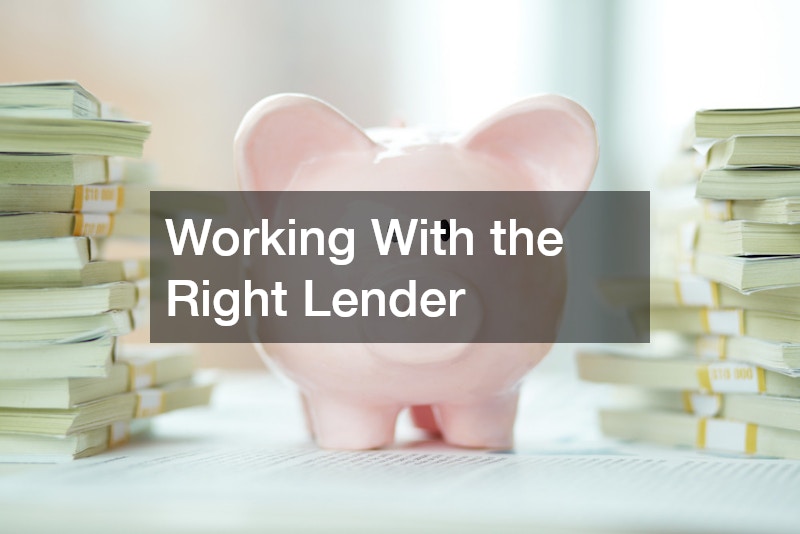Fixing and flipping homes has become a popular path for aspiring real estate investors. The idea of buying a rundown property, improving it, and selling it for a profit is appealing, but success takes more than just a fresh coat of paint and a dream. It requires research, planning, budgeting, and the right team of professionals. This guide will walk beginners through the key aspects of house flipping, from choosing the right property to making essential improvements and finally marketing the renovated home for a profitable sale.
While television shows make flipping homes look fast and glamorous, the reality involves careful decision-making and project management. A strong foundation in the fix and flip formula is essential. This includes knowing how much to pay for a property, estimating renovation costs, calculating after-repair value (ARV), and understanding holding costs. With these elements in place, first-time flippers can minimize risk and increase their chances of success.
This guide will also address the most common challenges that beginners face and provide insight into working with contractors, managing budgets, and identifying properties with profit potential. Whether you’re flipping your first home or planning to scale into a business, this beginner’s guide will give you the foundation you need to succeed.
Understanding the Role of Renovations
At the heart of every successful flip is well-planned home renovations. These upgrades don’t just improve aesthetics; they significantly increase a property’s value. Common renovations include updating kitchens, modernizing bathrooms, replacing flooring, and enhancing curb appeal. While cosmetic changes are important, structural improvements should never be ignored.
Homebuyers expect updated homes, and strategic renovations are key to maximizing profits. However, beginner flippers often make the mistake of over-improving or underestimating costs. That’s why it’s essential to align your renovation budget with your expected resale price using the fix and flip formula. It ensures that every dollar spent adds measurable value to the final sale.
It’s helpful to partner with experienced contractors, but having a basic understanding of common renovation costs helps you negotiate and keep your project on budget. Focus on improvements that appeal to the broadest market. Neutral color palettes, energy-efficient windows, and open floor plans tend to attract buyers.
Keep in mind that not every renovation project requires luxury finishes. Quality workmanship, durability, and functionality are more important than extravagant upgrades. If your goal is to flip the home quickly and profitably, your renovation choices should reflect that strategy from day one.
Don’t Overlook Repairs on the Roof

One of the most overlooked, yet crucial, elements of a flip is roof repairs. A damaged or outdated roof can derail a home sale and result in significant unexpected costs if not addressed early. Many buyers will walk away from a home if the roof is in poor condition, regardless of how beautiful the interior may be.
When evaluating a property for flipping, always inspect the roof during the due diligence phase. If repairs or a full replacement are needed, factor those costs into your fix and flip formula. Roofing issues can include damaged shingles, leaks, poor ventilation, and sagging. Even minor problems, if ignored, can lead to water damage or mold, both of which are expensive to remedy.
Hiring a qualified roofer to assess the condition is a wise move. Replacing a roof may cost thousands, but it can also improve curb appeal and increase buyer confidence. If the budget allows, choosing energy-efficient materials may add value as well.
Remember, flipping is about managing risk and return. A solid roof is part of making a home market-ready and eliminating surprises during a buyer’s inspection, ensuring a smoother and faster sale.
Investing in Plumbing
Many house flippers prioritize cosmetics, but plumbing services are often where hidden issues lie. Outdated plumbing, leaks, or poorly installed fixtures can derail an otherwise attractive property. Whether you’re updating a kitchen or bathroom, plumbing is the backbone of a functional and livable space.
During the inspection phase, ensure a licensed plumber checks all pipes, drains, and water heaters. Common issues include leaky faucets, corroded pipes, low water pressure, and sewer line problems. Addressing plumbing early allows you to budget appropriately using the fix and flip formula, and helps you avoid costly surprises later in the renovation.
In some older homes, you may need to replace galvanized pipes with copper or PEX. Although this adds to your renovation budget, it also gives peace of mind to future buyers. Additionally, replacing outdated toilets, sinks, and bathtubs with modern fixtures improves both appeal and water efficiency.
Plumbing issues can significantly impact a home’s inspection and appraisal. For beginner flippers, it’s crucial to invest in these less visible upgrades to avoid setbacks and protect your profit margin. Plumbing may not be glamorous, but it’s one of the most important systems in any successful flip.
Working With the Right Lender

While many flippers buy homes with cash, others rely on financing. That’s why choosing the right mortgage lender is key. Whether you’re securing a hard money loan or conventional financing, the terms of your loan can make or break your flip.
Flipping houses requires access to quick and flexible financing. Hard money lenders are a popular choice because they offer faster approvals and base loans on the property’s value rather than the borrower’s credit score. However, they also come with higher interest rates and shorter repayment periods. When using the fix and flip formula, be sure to include interest payments and origination fees in your total cost estimate.
For beginners, it’s critical to shop around and compare lenders. Look for those with experience in real estate investing who can offer tailored advice and competitive rates. Understanding the full terms of your loan—including prepayment penalties or balloon payments—is essential for avoiding surprises.
Having a solid relationship with a reliable mortgage lender also allows you to scale your flipping business in the future. Once you build credibility through successful projects, it becomes easier to secure funding for larger or more frequent deals.
Managing Waste Through Garbage Collection
Renovations produce a lot of waste, from broken drywall and old flooring to roofing shingles and outdated cabinetry. Working with a reliable garbage collection company is essential for keeping your flip site clean and compliant with local regulations. Most neighborhoods have strict rules about construction debris, and ignoring them can lead to fines or delays.
Before beginning demolition, research local companies that provide dumpster rental and waste hauling services. Some specialize in construction debris and will offer flexible pickup schedules that match your renovation timeline. Having a clear plan for debris removal keeps the job site safer for workers and more presentable to curious neighbors or prospective buyers.
When calculating your fix and flip formula, don’t forget to budget for waste removal. Dumpster rentals and disposal fees can add hundreds or even thousands of dollars to your costs, especially if the project involves major tear-outs.
Additionally, recycling materials like wood, metal, or fixtures not only helps the environment but may also reduce your disposal costs. Managing waste responsibly is a small detail that can have a big impact on your timeline, budget, and community reputation.
Addressing Air Conditioning Needs

Flippers should never overlook the HVAC system. One of the most common yet unexpected expenses in a home flip is air conditioning repair. A faulty or outdated unit can easily turn away potential buyers, especially in warm climates where cooling systems are essential.
During the inspection phase, have a licensed HVAC technician assess the system’s condition. A minor issue like a clogged filter or low refrigerant may be an easy fix. However, a full system replacement can cost thousands. The fix and flip formula must account for potential HVAC repairs or replacements, as buyers will expect a fully functioning unit.
Even if the system works, replacing old thermostats with programmable or smart versions can add a modern touch. Energy efficiency upgrades can be attractive selling points and may qualify for local rebates, improving your ROI.
Ensuring a home has a reliable and efficient air conditioning system demonstrates attention to detail. It also protects your investment by preventing moisture issues, which can damage drywall and flooring. Buyers want peace of mind, and knowing the HVAC system has been recently serviced or replaced can seal the deal.
Partnering With an Experienced Realtor
After all the hard work and renovations, it’s time to sell. Partnering with knowledgeable realtors is one of the smartest moves a beginner flipper can make. An experienced agent can help you price the home correctly, market it effectively, and negotiate the best possible terms.
Realtors know what buyers in the area are looking for. They can offer advice on final staging touches and identify small updates that may boost the home’s perceived value. When used wisely, the fix and flip formula includes a budget for agent commissions and marketing costs, which are essential for closing quickly.
Don’t just choose any agent—look for those who specialize in investment properties or have a track record of selling renovated homes. Their knowledge of the local market will help ensure your flip is competitively positioned.
Additionally, realtors handle many of the administrative tasks that can bog down a first-time flipper, such as scheduling showings and managing paperwork. Their expertise can mean the difference between a fast, profitable sale and a stagnant listing that drains your budget.
Creating Curb Appeal With Architectural Design

Buyers often judge a home within seconds of seeing it. That’s why architectural design home elements matter. Curb appeal isn’t just about landscaping—it’s about the structure’s first impression. Upgraded siding, front porches, gables, and symmetrical windows can dramatically enhance a home’s exterior appeal.
When planning renovations, consider small changes that make a big impact. A modern front door, matching trim, and a coordinated color palette can create a cohesive look. The fix and flip formula should include a line item for exterior upgrades that complement the architectural style of the home and neighborhood.
Even adding faux shutters, porch lighting, or decorative trim can elevate the home’s perceived value. It’s not about drastic changes—it’s about refining what’s already there.
The goal is to create an exterior that entices buyers to come inside. If they fall in love with the outside, they’re already emotionally invested. A cohesive architectural presentation improves marketability and may lead to quicker, higher offers, making it a wise investment for any flip.
Adding Luxury With Natural Stone Finishes
When it comes to kitchen and bathroom upgrades, choosing a natural stone supplier can elevate the space from functional to luxurious. Materials like granite, marble, and quartz are popular among homebuyers and offer durability, style, and resale value.
While natural stone may cost more upfront than laminate or tile, it often justifies the price with its longevity and appeal. Buyers are drawn to high-end finishes, and choosing the right stone color and pattern can make your flip stand out in a crowded market.
Incorporating stone into countertops, backsplashes, or fireplace surrounds should be balanced with the home’s overall value. Using your fix and flip formula, calculate whether the ROI on stone materials makes sense for your price point.
Additionally, working with a local supplier may reduce costs and give you access to unique materials not available through big-box retailers. Adding touches of natural stone shows thoughtful design and helps create a high-end feel without over-improving the property.
Clearing the Way With Removal of Trees
Before any major renovation can begin, the property itself may require clearing or trimming. If overgrown landscaping or dead trees are present, calling a tree removal service may be your first step.
Large or damaged trees pose safety risks and can block sunlight from entering the home, making interiors appear dark and less appealing. Removing trees can improve curb appeal, protect the property, and even reduce homeowners’ insurance premiums. Always check with your city for necessary permits before starting.
Tree removal should be factored into your fix and flip formula, especially for homes with large yards or older landscaping. While it may not be the most visible part of the renovation, it’s one of the most essential when preparing a property for resale.
Removing one or two strategic trees can open up sightlines and make a home feel larger and more welcoming. It also protects your investment by preventing root damage to foundations and sidewalks. Ultimately, it’s a small cost that can have a big impact.
Flipping homes is not about luck—it’s about strategy. Understanding the fix and flip formula ensures that your investment is based on sound math and market awareness. From home inspections to final sales, every stage of the flip requires careful planning and execution.
By paying attention to core areas like plumbing, HVAC, roofing, and design, you increase your chances of turning a profit. Each decision you make—whether it’s choosing the right mortgage lender or hiring a quality garbage collection company—affects your bottom line.
Remember, the goal is not just to renovate, but to add value in a way that resonates with buyers. Whether it’s natural stone countertops, smart thermostats, or architectural curb appeal, these upgrades should all align with the expectations of your target market.
Mastering the fix and flip formula means knowing when to spend and when to save. With the right knowledge and a disciplined approach, flipping homes can be a rewarding and profitable venture—even for beginners.



